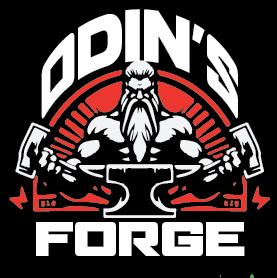
Heavy Weights vs. High Reps: Which One Builds More Muscle
Share
When it comes to building muscle, lifters are often divided into two camps: those who swear by lifting heavy for low reps and those who stick to lighter weights with higher reps. You’ll hear arguments on both sides—some claiming you need to lift as heavy as possible to grow, while others say volume is king. But what does the science actually say? And which method is right for you?
Let’s break it down.
Understanding Muscle Growth: Strength vs. Hypertrophy
Muscle growth (hypertrophy) happens when the muscle fibers undergo stress and repair themselves to become bigger and stronger. There are two main types of hypertrophy:
• Myofibrillar Hypertrophy (Strength & Density) – Achieved by lifting heavier weights (80-90% of 1RM) for lower reps (3-6). This increases the size and density of the actual muscle fibers, making them stronger but not necessarily larger in volume.
• Sarcoplasmic Hypertrophy (Size & Endurance) – Achieved with moderate weight (60-75% of 1RM) and higher reps (8-15+). This increases muscle size by boosting glycogen storage and muscle endurance rather than fiber density.
Both types of hypertrophy contribute to overall muscle growth, but the way you train determines which one you emphasize.
Lifting Heavy for Low Reps: Does It Build Muscle?
Heavy lifting is commonly associated with strength gains, but does it also build size? Studies suggest that training in the 3-6 rep range with heavy weights (near failure) can still lead to muscle hypertrophy, though it’s more biased toward strength development due to the focus on neuromuscular adaptations.
Pros:
✅ Greater Strength Gains – Maximizes neural efficiency, leading to more force production.
✅ Denser, Harder Muscle Look – Myofibrillar hypertrophy creates more compact, defined muscles.
✅ Better Progressive Overload – Strength-focused training allows you to lift heavier over time, creating a strong foundation for size gains.
Cons:
❌ More Fatiguing on the Nervous System – Heavy lifting taxes the central nervous system, requiring longer recovery times.
❌ Increased Injury Risk – Lifting near max capacity often increases the risk of strains or joint issues, especially with poor form.
❌ Less Muscle Pump & Volume – Heavier weight means fewer total reps, reducing metabolic stress—a key driver of muscle growth.
High Reps for Muscle Growth: Fact or Fiction?
The 8-15+ rep range is often recommended for hypertrophy because it maximizes time under tension and metabolic stress, both of which are major drivers of muscle growth. Studies have shown that training with lighter weights to failure can be just as effective as heavy lifting for hypertrophy, as long as total volume is equated.
Pros:
✅ Increased Muscle Pump – Higher reps increase blood flow, expanding the muscle temporarily and improving nutrient delivery.
✅ Lower Injury Risk – Using lighter loads reduces joint stress and risk of injury.
✅ Better Muscular Endurance – Training in this range improves endurance and work capacity, benefiting overall athleticism.
Cons:
❌ Slower Strength Progression – High-rep training doesn’t build as much raw strength compared to heavy lifting.
❌ More Time-Consuming – Completing multiple high-rep sets takes longer than low-rep training.
❌ Risk of Junk Volume – If sets aren’t taken close to failure, high reps can become ineffective for muscle growth.
So, Which One Should You Choose?
The Best Approach? Both.
Research suggests that the most effective way to maximize hypertrophy is to incorporate both heavy lifting and high-rep training into your routine. This means:
• Use heavy weights (3-6 reps) for compound lifts like squats, deadlifts, and bench press to build strength.
• Use moderate weights (8-15 reps) for accessory work like curls, lateral raises, and triceps extensions to increase volume and metabolic stress.
• Train close to failure in any rep range to ensure muscle fibers are fully recruited for growth.
Scientific Takeaway
• If strength is your goal → prioritize low reps, heavy weight
• If muscle size is your goal → prioritize higher reps, moderate weight
• If you want both → mix rep ranges strategically
Thoughts from the Forge: What’s the Best Strategy for You?
At the end of the day, muscle growth comes down to progressive overload, training intensity, and consistency. Whether you’re pushing heavy weight for low reps or hitting high-rep sets to failure, effort matters more than the method.
So, what’s your go-to training style? Do you prefer lifting heavy or chasing the pump with high reps? Drop your thoughts!
Want a pre-workout that fuels both strength and endurance? The Berserker Blend was built for warriors who want to lift heavy and push through high-rep burn. Get the pump, the focus, and the energy all in one. Check it out on the products page!
